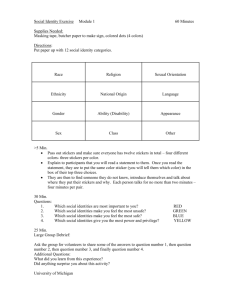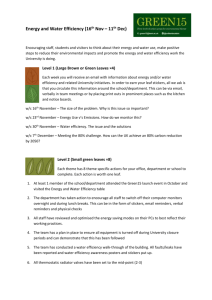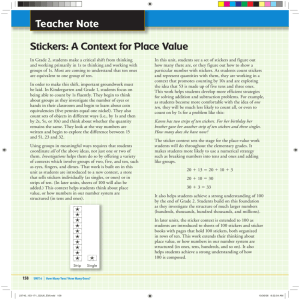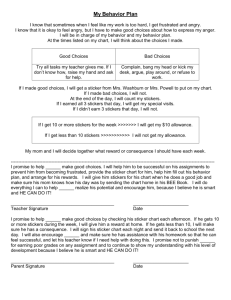Multiple Identity Exercise: Exploring Social Group Memberships
advertisement
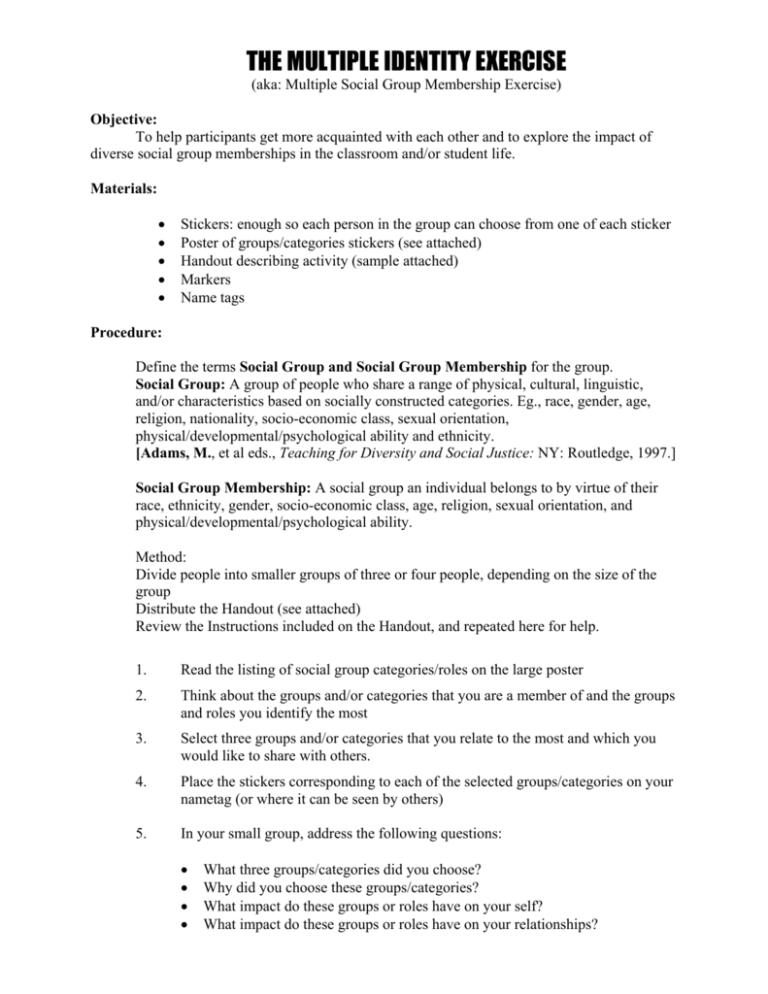
THE MULTIPLE IDENTITY EXERCISE (aka: Multiple Social Group Membership Exercise) Objective: To help participants get more acquainted with each other and to explore the impact of diverse social group memberships in the classroom and/or student life. Materials: • • • • • Stickers: enough so each person in the group can choose from one of each sticker Poster of groups/categories stickers (see attached) Handout describing activity (sample attached) Markers Name tags Procedure: Define the terms Social Group and Social Group Membership for the group. Social Group: A group of people who share a range of physical, cultural, linguistic, and/or characteristics based on socially constructed categories. Eg., race, gender, age, religion, nationality, socio-economic class, sexual orientation, physical/developmental/psychological ability and ethnicity. [Adams, M., et al eds., Teaching for Diversity and Social Justice: NY: Routledge, 1997.] Social Group Membership: A social group an individual belongs to by virtue of their race, ethnicity, gender, socio-economic class, age, religion, sexual orientation, and physical/developmental/psychological ability. Method: Divide people into smaller groups of three or four people, depending on the size of the group Distribute the Handout (see attached) Review the Instructions included on the Handout, and repeated here for help. 1. Read the listing of social group categories/roles on the large poster 2. Think about the groups and/or categories that you are a member of and the groups and roles you identify the most 3. Select three groups and/or categories that you relate to the most and which you would like to share with others. 4. Place the stickers corresponding to each of the selected groups/categories on your nametag (or where it can be seen by others) 5. In your small group, address the following questions: • • • • What three groups/categories did you choose? Why did you choose these groups/categories? What impact do these groups or roles have on your self? What impact do these groups or roles have on your relationships? • • • What impact do these groups or roles have on your professional interactions? What similarities and differences in experience did emerge in your group? What else…? Ask participants to get up and follow the directions described in the Handout, then return to their groups after they select the stickers. Note: This step is often a bit confusing for participants to follow so you will need to monitor this part. Once participants return to their small groups, encourage sharing and listening to each other’s responses to the questions listed above. Bring everyone together in a large group to debrief the activity. Suggested debriefing questions for larger group: • • • • • • • • • • • • • • How did it feel to do this activity? What was easy? What was challenging? What groups/categories did folks pick? Is there any category that you would identify as your “core” identity? What similarities and differences did emerge? Did you identify any environments where one identity was more salient than another? What kinds of factors affect the relative salience of a particular identity? What do you think some of the authors for this week’s readings would think of this exercise? Where do you think some of your students you work with would pick? Why? How do our students show that they might be struggling with issues presented by this exercise? What invisible identities (inside/outside identities) became visible as a result of this exercise? Any thoughts about this? How/why are these categories helpful or not helpful in describing you or others? Which of these identities are socially constructed? Personally constructed? Other constructions? If you picked the blank category, what identity were you thinking of and why? Note to the Facilitator: This activity can stimulate a lot of reactions, particularly if participants feel triggered about each other’s comments. For example, participants from subordinate groups might feel triggered by participants from dominant groups who don’t say much concerning their dominant group membership, or who say something that sounds “insensitive.” Participants from dominant groups may feel triggered by participants from subordinate groups’ personal disclosure and emotional intensity. The level of risk when sharing in the large group will depend on whether you are working with an intact on-going group or a group that is meeting only once. If it is a group that is meeting only once the level of sharing may be fairly low risk, whereas for an on-going intact group you may want to encourage more risk. Regardless of the type of group, you may encourage participants to clarify their comments as much as possible. If you have more than 15 participants or want to save some time, create more than one Multiple Social Groups Membership Poster. This way participants will have more than one place to see what sticker corresponds to what group/category. You may also want to give students their own envelope with all of the possible stickers in it for them to choose, or you may want to have various locations around the room, where participants can find groups of the stickers. [Adapted from Ximena Zúñiga, Social Justice Education, University of Massachusetts - Amherst, Luis Sfeir-Younis and Hellen Weingarten, Fair Teach, Uni versity of Michigan.] The chart or poster looks something like this: Family Ability Gender Full-time staff Race Religion Geographical/Regional Origin Sexual Orientation Socioeconomic status Ethnicity Full-time Student
